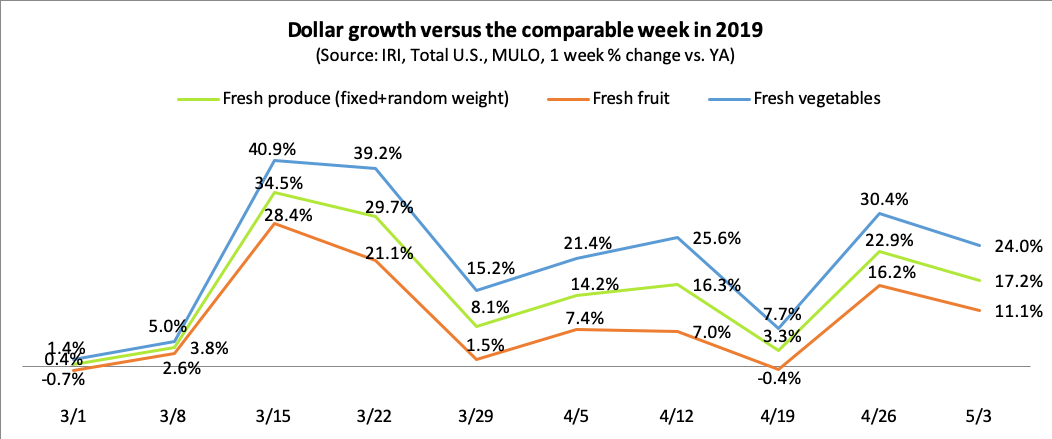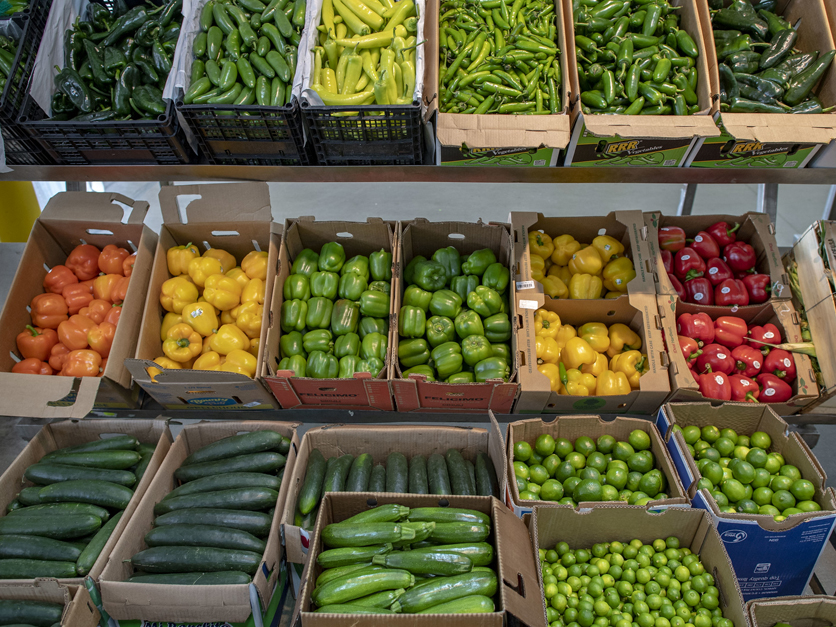Following a stellar last week of April, fresh produce sales remained highly elevated during the first week of May. That’s according to an analysis by 210 Analytics, IRI and the Produce Marketing Association.
Fresh produce growth for the week of May 3 versus the comparable week in 2019 increased 17.2%, noted Anne Marie Roerink, principal and founder of 210 Analytics. Fresh vegetables continued to easily outperform fruit, but both achieved double-digit increases. Meanwhile, consumer interest in all three fruit and vegetable offerings continued, with dollars split between fresh, frozen and shelf-stable. Frozen once more had the highest gains, up 43.1%.
- Fresh produce increased 17.2% over the comparable week in 2019.
- Frozen, +43.1%
- Shelf-stable, +32.9%
Source: IRI, Total US, MULO, % growth vs. year ago week ending April 26, 2020
“I am very encouraged with the early May fresh produce performance going into the summer months,” said Joe Watson, VP of membership and engagement for the Produce Marketing Association (PMA). “As an industry we are working hard to keep the supply moving, putting employee safety and food safety front and center, and consumers are rewarding our efforts with their dollars. Additionally, foodservice trucks loaded with fresh produce hitting the roads once more was a very welcome sight this week and I am confident we will see strengthened overall produce demand in weeks to come.”
Compared with the same week in 2019, fresh produce generated an additional $205 million in sales during the week of May 3. Growth rates were in line with the levels seen during late March and early April. Fresh vegetables, at +24.0%, continued to easily outperform fresh fruit and boasts double-digit increases for seven out of the last eight weeks.
“The changed everyday demand is driving sizable sales but the where and when is significantly different as well,” said Jonna Parker, team lead for fresh at IRI.
“Grocery stores have greatly increased their share of fresh dollars in recent weeks, jumping from 60.2% the week of March 8 to 64.2% the week of April 12, for instance. This is directly related to shoppers wanting to reduce the number of trips. Likewise, after a few years of stagnant engagement, grocery e-commerce jumped years ahead on its growth trajectory. In a way, it is 2025, now.”
IRI data shows that fresh foods have enjoyed double- and triple-digit growth in weekly spending versus year ago since the week of March 8.
“The gains in fresh foods e-commerce are accelerating, driven by two factors. First, many retailers and third-party grocery delivery companies had to very quickly ramp up their online capacity, which resulted in great pressure on slot availability early on during the pandemic. Second, there are many shoppers who ordered online for the first time as a result of the pandemic. They may have started off with smaller baskets and avoided fresh. But as their comfort with online ordering grows, it is very likely we will see order frequency, basket size and inclusion of fresh items, grow along with it,” Parker adds.
An early April consumer survey by the American Frozen Food Institute (AFFI) and 210 Analytics found that 15% of frozen food shoppers pointed to their concerns over buying fresh fruit and vegetables during COVID-19 as a reason to purchase frozen fruits and vegetables rather than fresh. Some consumers commented about their concerns that other buyers might have touched or coughed on the fresh produce.
For more news, go to www.Agri-Pulse.com.


